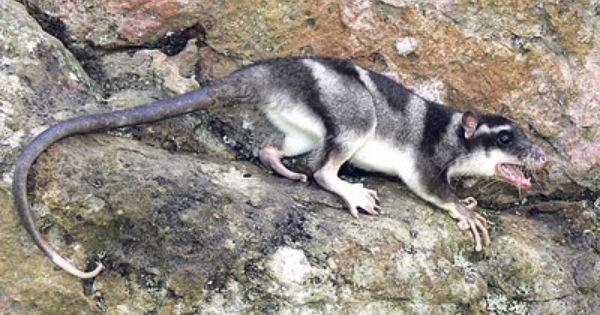
Yapoks, also known as water opossums, are more than just quirky animals. They have a unique lifestyle that revolves around water, making their habitats quite special. Think of them as little furry adventurers, finding their way through rivers and streams in search of food and safety. Let’s take a closer look at where they thrive, how their environment shapes their lives, and why it matters.
Understanding Yapoks
Yapoks, or *Chironectes minimus*, are native to Central and South America. These furry little creatures are often found in **marshy areas** and near **freshwater bodies** like rivers, lakes, and swamps. They’re primarily nocturnal and have some fascinating adaptations that help them live in both water and land environments.
With their streamlined bodies and webbed feet, they’re excellent swimmers. Yapoks can spend a significant amount of time in the water, hunting for food like **fish**, **frogs**, and **insects**. But they’re not just top-tier swimmers; yapoks are also great at climbing trees, so their habitats often include areas with plenty of vegetation near water sources.
Geographic Distribution of Yapoks
Yapoks aren’t confined to just one small area; they are distributed across various countries in Central and South America. You can find them in:
- **Colombia**
- **Venezuela**
- **Brazil**
- **Peru**
- **Ecuador**
- **North Argentina**
- **Paraguay**
The presence of yapoks in these regions is primarily linked to the availability of water bodies. They thrive in **tropical rainforests**, **savannas**, and **wetlands**, all of which provide them with food and shelter. Here’s the thing: each region has its unique habitat characteristics that influence how yapoks live.
Typical Yapok Habitats
Yapoks prefer freshwater environments with abundant **vegetation**. They typically favor areas where they can find both food and cover from potential predators. Their habitats usually include:
- Rivers and Streams: Yapoks are often found in slow-moving or stagnant waters where they can hunt for aquatic prey.
- Lakes and Ponds: These bodies of water provide plenty of food, like fish and frogs, which are a staple in their diet.
- Marshes and Swamps: These wetland areas allow yapoks to find shelter amidst dense vegetation while hunting for insects and crustaceans.
Honestly, the lushness of their surroundings not only helps them find food but also offers places to hide from predators like snakes and birds of prey. The balance between water and greenery in these habitats is crucial for their survival.
Adapting to Their Environment
So, how do yapoks manage to thrive in such diverse environments? Their adaptations are truly remarkable. For instance, their **webbed feet** make them agile swimmers, allowing them to dive and explore underwater for long periods. When foraging for food, they can even close their ears and nostrils to keep water out.
Moreover, their **fur is water-repellent**, which helps them stay warm and dry when they come out of the water. This unique adaptation allows them to hunt during the night without worrying about becoming cold or wet. They also have excellent night vision, which is essential for nocturnal living. If you’ve ever wondered how they manage to navigate through murky waters, now you know!
Threats to Yapok Habitats
Like many wildlife species, yapoks face several threats that can impact their habitats and populations. Here are some of the significant challenges they encounter:
- Habitat Destruction: Deforestation and urban development can lead to the loss of wetlands and rivers, which are crucial for their survival.
- Pollution: Contaminated water sources harm not only yapoks but also the entire ecosystem they depend on.
- Climate Change: Changes in weather patterns can affect water levels and the availability of food, posing a threat to their habitats.
You might be wondering how these factors affect the overall ecosystem. When yapok populations decline, it disrupts the food web and can lead to an increase in pest populations, which is not great for anyone.
Conservation Efforts for Yapoks
With all these threats in mind, conservation efforts are underway to help protect yapoks and their habitats. Various organizations focus on river and wetland conservation to ensure these environments remain intact.
Here’s what’s being done:
- Protected Areas: Establishing national parks and reserves helps safeguard their habitats from human activities.
- Restoration Projects: These initiatives aim to restore degraded wetlands and rivers to improve habitat quality.
- Education and Awareness: Raising awareness about the importance of yapoks and their ecosystems helps promote conservation efforts among local communities.
It’s heartening to see people come together to protect these fascinating creatures. By restoring and preserving their habitats, we can ensure that future generations will also be able to marvel at yapoks.
The Importance of Yapoks in Their Ecosystem
Yapoks play a unique role in their ecosystems. As predators, they help control the populations of fish and insects, maintaining a balance in the food web. Additionally, their presence indicates a healthy and thriving wetland ecosystem.
Here’s the takeaway: when we protect yapoks, we’re not just safeguarding a species; we’re also ensuring the health of the entire ecosystem they inhabit. Every little piece is vital, like a jigsaw puzzle. Removing even one piece can lead to a picture that’s less vibrant and whole.
In conclusion, understanding where **yapoks live** sheds light on the delicate balance of their habitats and the ecosystems they are part of. As cute as they are, these unique marsupials teach us important lessons about conservation and environmental stewardship. The more we learn, the better we can protect these little adventurers and their watery homes.
